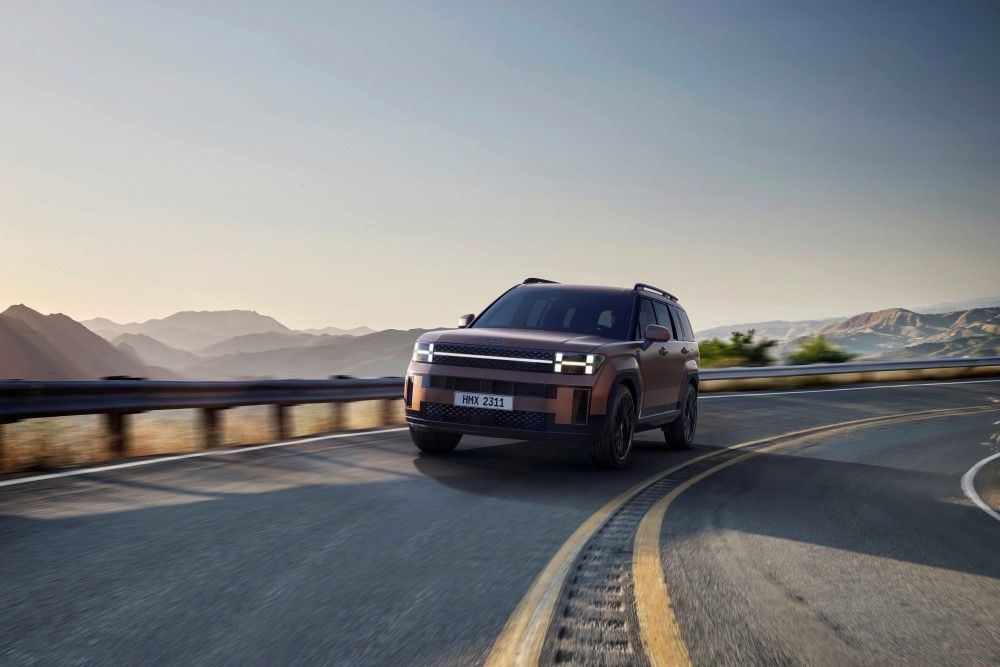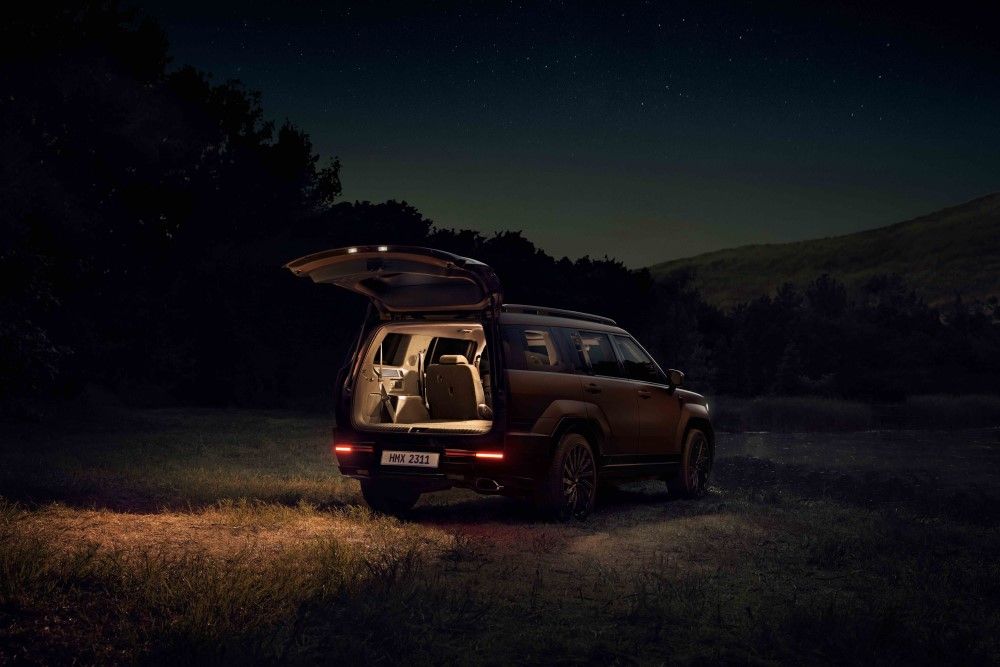
Boxy Santa Fe Here Early 2024
Hyundai will launch its fifth-generation Santa Fe, clothed in a boxier body akin to the latest Land Rover Defender, in Australia in early 2024.
The new generation Santa Fe — shown last month in Santa Fe, New Mexico at its global reveal — replaces the successful predecessor that was launched in 2018.
In its 2024 guise, the Santa Fe grows in size with the aim to improve cabin and luggage space and the claim that it has a “best in class” interior that includes a wider and flatter tailgate.
It is 4830mm long (up 45mm on the current model) and 1720mm high (up 20mm) and boasts cargo space of 725 litres (first and second row in place).
Hyundai data shows the second-row legroom is bigger by up to 35mm compared with the outgoing model. The third row is claimed to have 761mm of legroom (up 15mm), 958mm of headroom (up 69mm) and a rear seat that is 30mm higher to improve passenger visibility.
Much of the enhanced cabin room comes from the increase in wheelbase, which is up 50mm at 2815mm.
The increased passenger room is enhanced by features such as the steering-column placement of the gear shifter, in line with the latest Kona.
Hyundai boasts the Santa Fe uses eco-friendly materials including recycled plastics. It also has a model-dependent “UV-C Sterilisation Tray” that sterilises items placed inside the upper glovebox.

It has a curved glass dashboard screen for the instruments and infotainment system comprising two 12.3-inch units that run an updated infotainment system with Hyundai’s latest software.
This includes over-the-air software updates, Bluelink connected system and wireless Apple CarPlay and Android Auto along with a cleaner look thanks to reduced use of manual buttons. It also has two wireless phone chargers.
Safety equipment can include — depending on model and final Australian specifications — autonomous emergency braking, lane-keep assist, adaptive cruise control with stop and go, driver attention warning, door-exit warning, rear cross-traffic alert, traffic sign recognition, front and rear parking sensors, 360-degree and rear-view cameras.
Hyundai hasn’t confirmed drivetrain specifications for Australia — these will be announced closer to the launch — and while the 2.5-litre turbo-petrol (207kW/422Nm) and 1.6-litre plug-in hybrid (combined 173kW/367Nm) will continue, there’s no confirmation of a continuing 2.2-litre diesel or the 3.5-litre petrol V6.
The launch also debuted a top-line XRT concept version that features a 40mm higher ride height and heavy-duty body kit with off-road tyres and wheels, roof-mounted spare tyre, and a rear-mounted ladder. This is under appraisal for the US market but not yet for Australia.
Once you've found the right car, the next step is sorting out car finance that actually works for your budget. Credit One is Australia's best-reviewed finance broker, with 3,000+ five-star Google reviews from customers who've been through the process. Check out Credit One reviews to see what people say, or head straight to the loan repayment calculator to see what the numbers look like.